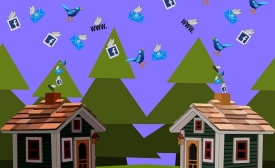estonia

A RAND study focused on the scope of these campaigns and possibilities for countering, such as through media literacy training and the creation of counter-narratives.
Estonia has carved out a niche as a startup hub and a friendly environment for foreign businesses. Its biggest innovation, however, lies in e-government. Citizens of this tiny Baltic nation can conduct almost every encounter with the state online. [...] These achievements have made e-government a potent source of soft power for Estonia.
Are there any limits to the channels and tools that a state can use to perpetuate narratives on national identity? Traditional approaches to what has been defined as nation-building have tended to rely on such things as studies of the use of the national language, school education, and political narratives. [...] Indeed, cinema, large-scale events with hundreds of thousands of attendees, cultural initiatives, and even food narratives can be used to construct identity in a path that goes from traditional nation-building to what has recently been defined as nation-branding.
A new national curriculum for primary grades based on the Estonian experience will upgrade pre-school and general education in Georgia. The three year partnership between Georgia and Estonia aims at transforming education in Georgia by introducing innovations and digital technologies in education process. [...] This cooperation will consist of technical support, capacity development and exchange of experts and experience sharing.
Enterprise Estonia, the state-run agency responsible for promoting Estonia abroad and attracting investment, launched two brand new web platforms, estonia.ee and brand.estonia.ee, at the cost of €200,000. The new website estonia.ee replaces the estonia.eu site that had become obsolete and outdated, both in design and content. The long-serving “Welcome to Estonia” logo will be dumped as well.
Technology makes government operations more transparent and delivery of services more efficient and less costly. It’s often called “e-government,” and officials beyond Estonia and South Korea are embracing it to various extents.
In Spain, for example, for every chime of the clock at midnight, people eat one grape. Each of the 12 grapes represents good luck for a month of the coming year, but only for those who can get them all in their mouths before the clock finishes striking. Here is a sampling of other traditions from around the globe that, like Spain’s grape-eating, have found their way to the United States.







